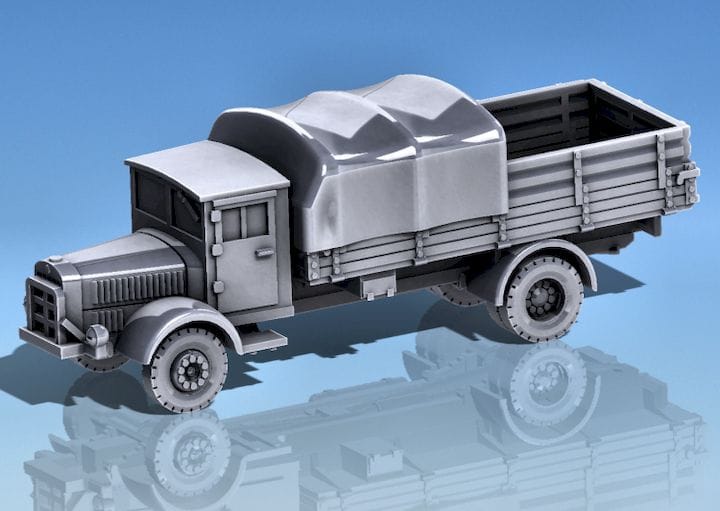![Not a 3D model of a tank [Source: Marco Bergman]](https://fabbaloo.com/wp-content/uploads/2020/05/image-asset_img_5eb0994e01c06.jpg)
We recently published a story on an incident that caused many 3D models on Thingiverse to be removed. Now, we know a lot more.
We’ve been speaking with Marco Bergman, who was at the center of the incident, having most of the affected models removed from the site.
Our first story of the sudden removal of 3D models from Thingiverse is here, but in a nutshell a series of uploads were claimed to be infringing on the intellectual property rights of World of Tanks, a popular online video game. Evidently the owner of the game, Wargaming Group Ltd., felt their material was somehow being copied and/or misused in a public forum and wanted them gone.
New Zealand-based Bergman explained:
“Basically, WOT did a thingiverse search for ‘world of tanks’, and concluded that everything that showed up was stolen. Which meant that everything which had ‘world of tanks’ in either its search tag, or in the search tag of a derivative, got hit. All of my models are entirely my own work.”
Wait, what? They did a search for text only? This is apparently true, based on the actual DMCA request provided to us:
![DMCA request to remove items from Thingiverse [Source: Marco Bergman]](https://fabbaloo.com/wp-content/uploads/2020/05/image-asset_img_5eb0994e6457e.jpg)
This is quite incredible. Apparently there was zero inspection of the actual 3D models involved, and an assumption was made that if the phrase “world of tanks” appeared in the description or tags it must be infringing content!
![Not a 3D model of a tank [Source: Marco Bergman]](https://fabbaloo.com/wp-content/uploads/2020/05/image-asset_img_5eb0994ed16b9.jpg)
Thus it seems that if you post any item at all on Thingiverse with those characters appearing, it would be taken down, no questions asked.
It gets worse: Bergman explained that his 3D models were affected because someone used the offending keywords in a derivative of his work. Evidently guilt is inherited on Thingiverse. Bergman has zero control over other people’s uploads.
![Not a 3D model of a tank [Source: Marco Bergman]](https://fabbaloo.com/wp-content/uploads/2020/05/image-asset_img_5eb0994f1e119.jpg)
You may be noticing the images sprinkled throughout this post. You’ll note that none of them are tanks, let alone tanks similar to those in World of Tanks. And certainly none were ripped from World of Tanks. Bergman explained to us that all of his 3D models were of his own original design.
This is quite disturbing, as the method of infringement detection is clearly flawed. Wait, let’s correct that — it’s not just flawed, it is wrong. Searching for text might be a way to perhaps find some hints about items that might be associated, but obviously must be inspected to see if they actually are infringing.
That was clearly not done in this case.
![Not a 3D model of a tank [Source: Marco Bergman]](https://fabbaloo.com/wp-content/uploads/2020/05/1-100-43r_result_img_5eb0994f62c65.jpg)
It also demonstrates a phenomenon spoken about when discussing automated infringement detectors: false positives. That’s the idea that a robotic sweep might accidentally pick up a few items mistakenly identified as infringing. When it’s put like this you imagine some kind of sophisticated algorithm that wasn’t quite right and needs a bit of tuning.
That is definitely not the case here.
This sweep apparently resulted in 100% false positives, and demonstrates virtually no ingenuity whatsoever in the method of detection. Wargaming Group Ltd. should be ashamed of their terrible approach in this situation — and likely many others across the Internet.
This is not the way to maintain a friendly client base.
But there are some additional lessons here. It may be that other rights holders employ similar tactics in detecting what they believe to be infringement. Those uploading original 3D models to Thingiverse had best not include any mention of obvious trademarked text, and hope that any uploaded derivatives also don’t do so.











